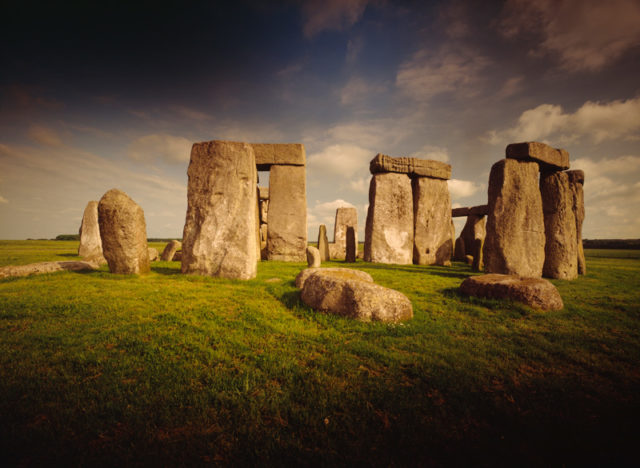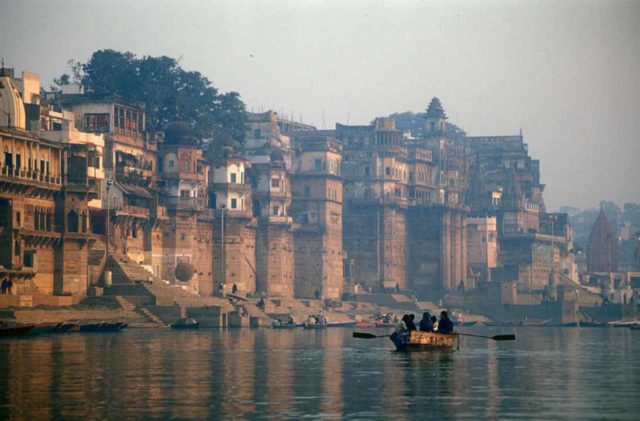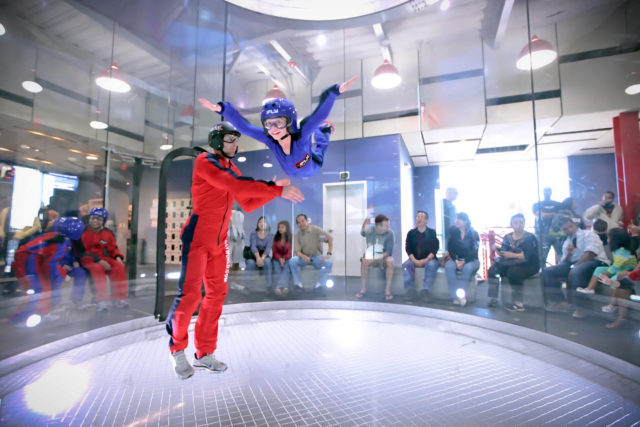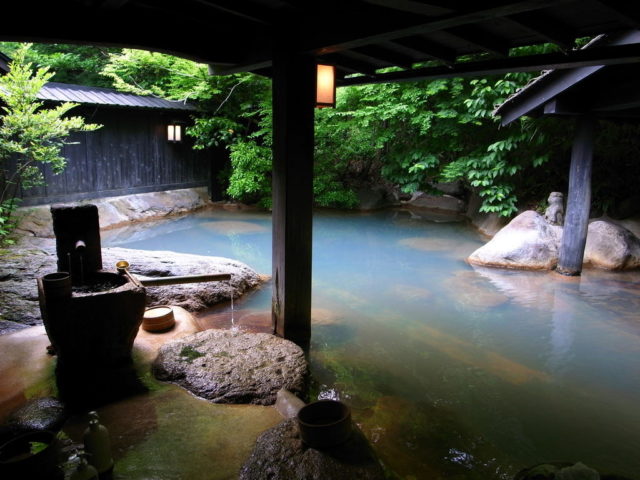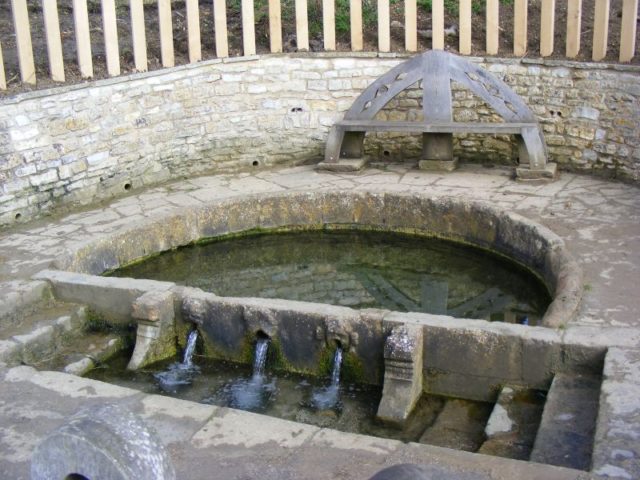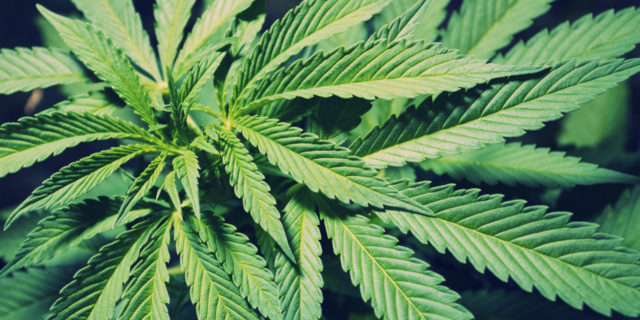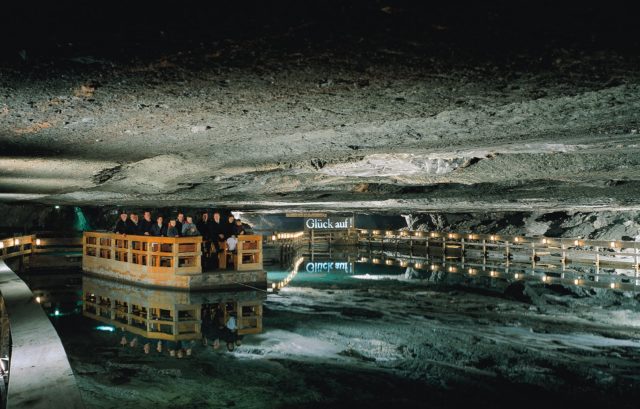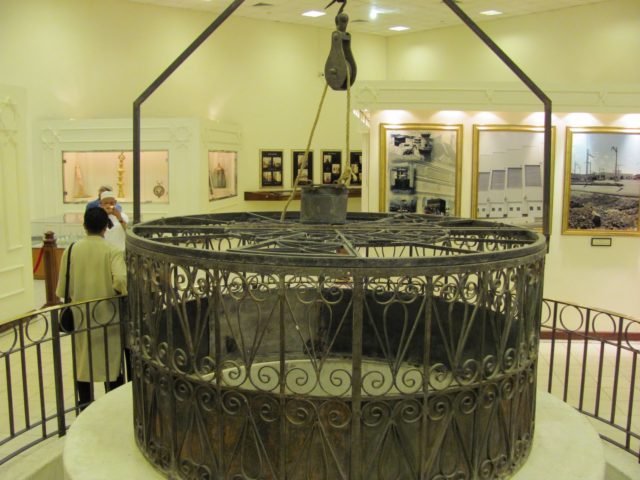All throughout history, mankind has yearned to benefit from the natural healing powers that our planet has to offer. These mystifying places can be found in all corners of the Earth — some are difficult to explain and shrouded in mystery, while others have revealed their secrets through scientific investigation. In either case, these places symbolize a unique quest for healing that resides outside the realm of modern medicine.
10. Stonehenge
The prehistoric monument Stonehenge is the source of many unanswered questions. For years, historians and archaeologists have puzzled over how a Neolithic civilization managed to transport large stones without the use of modern tools — not even the wheel was invented at this point in time — from distances up to 200 miles away. Adding to the mysticism of the stones are various (and often peculiar) explanations for their purpose. Opinions have ranged from astronomy to religion, and even to extraterrestrial origins. Among these theories exists the notion that Stonehenge is actually a sanctuary for healing.
There are two main types of stones in Stonehenge, bluestones and sandstones. Despite far more bluestone fragments being found during excavation, findings near the surface predominantly consisted of sandstone fragments, a ratio that seems mathematically unlikely to experts. Proponents of the healing theory speculate that this may be a case of the bluestones being dug up and removed by visitors seeking their healing properties. Although let’s not rule out people seeking free souvenirs.
This theory becomes increasingly viable when we consider the human remains found at the site. Not only did most of the deceased show clear evidence of illness, but oxygen levels in the teeth showed that these individuals came from various parts of the country. Was this merely a burial site, or were these individuals making the trek in search of healing powers beyond our understanding? At least we know one thing: if these particular individuals went there to be healed, it didn’t quite work.
9. The Ganges River
The Ganges, a 2,510 km stretch of river that meanders down from the Himalayas and drains into the Bay of Bengal, is known for its beauty and its spiritual significance. Running through one of the most densely populated areas on Earth and supporting nearly 100 million people, it comes as no surprise that the Ganges River Basin is also known for high levels of contamination and pollution. It’s estimated that approximately one billion liters of untreated sewage is dumped into the river on a daily basis. As if that wasn’t enough to make us leave our swim trunks at home, there are thousands of cremated human bodies released into the Ganges each year. That makes the notion of the Ganges River as a source of healing surprising, to say the least. However, scientists are beginning to think there’s some truth behind this theory, and they have evidence to prove it.
The waters of the Ganges River have been found to possess bactericidal activity, which is the ability to kill bacteria. This is due to high concentrations of bacteriophages, which attack and kill bacteria and pathogens in the body. Since phages are highly strain-specific, they’re essentially harmless to humans. Phage therapy is already used to treat infections linked to bacteria, so perhaps the idea of the Ganges as a destination for healing isn’t so far-fetched. That being said, taking a casual dip in the Ganges may not be in your best interest.
8. Buried Underground
When we think of grave sites we think of death. One group in Russia, however, is much more optimistic about the subject, and they’ve given a very literal meaning to the term “dirt nap.” Assuming that most of us quiver at the thought of being buried alive, the notion of this process being used for healing purposes should sound absurd. However, these Russians have found an unusual form of psychological therapy, one that’s said to help with stress and depression. For $160, participants are buried under 30 cm of soil. They’re left alone with their thoughts, fears and anxieties, all while breathing through a small tube. Sessions can last anywhere from 20 to 40 minutes, and judging by the reviews from participants, the process might actually work. One volunteer described his session by saying “The first thing you experience is panic. Once your face is covered with Earth, you start tasting it and thinking what the hell am I doing down here? But once you calm down there is simply no other place like this.”
If you’re feeling stressed and thinking of trying it the process is apparently safe, but don’t try it at home. One Russian man asked his friend to bury him alive for the night in the hopes of bringing good luck. Investigators confirming the man deceased the next morning is a clear example of why this shouldn’t be attempted by just anyone. According to reports, the organizer of the therapy is a 10 year veteran of burials. We really hope that means “funeral director” and not “Mafia member.”
7. The Dead Sea
The Dead Sea is a fascinating body of water located near Jerusalem. Not only is this salty lake the lowest point of any landmass on Earth (it sits at about 400 meters below sea level), but it’s also said to be able to provide us with numerous healing properties.
Known for it high salinity, life in the Dead Sea is impossible (hence the name). It’s this salt, in combination with other minerals such as magnesia, bromine and iodine, that provide the lake with its apparent healing abilities. The water in the Dead Sea can have a positive effect on the nervous system and various glands, as well as have an anti-allergic effect on the skin and bronchial tubes. It’s even been known to significantly mitigate or even cure psoriasis. If that’s not enough, the Dead Sea is also an ideal destination for those dealing with muscle spasms and rheumatic conditions, as the high salt concentration prevents the body from sinking during physiotherapeutic water exercises. For those of us who suffer from any of these ailments, or who are just weak swimmers, a trip to the Dead Sea might just be the perfect vacation.
6. Falling From a Plane
For those who have skydived, the fear and excitement of plummeting to Earth from 15,000 feet is impossible to describe (or so we hear). For the rest of us who are too scared to try we may have to reconsider, especially if we suffer from a mental illness.
In his youth, Brandon Stogsdill’s life was stricken with poverty, addiction and mental illness. He suffered from depression and soon turned to drugs and criminal activity. It wasn’t until Brandon was sentenced to more than three years in prison that he realized he needed to find help for himself.
Stogsdill, who is now a child mental health specialist in Seattle, has found a way to incorporate the thrill of skydiving into therapeutic solutions for depression and anxiety. Using an indoor skydiving facility, kids are able to practice mindfulness while experiencing a feeling of free falling. Additionally, individuals who seek a rush from drugs and other negative outlets can experience it in a positive environment through Brandon’s therapy sessions. Skydiving is certainly an unorthodox approach to healing, and shouldn’t replace a trip to the therapist. However, Brandon’s success story provides evidence that outside-the-box approaches to mental health shouldn’t be overlooked.
5. Japanese Onsen
In Japan, the word “onsen” refers to hot springs, and the country is full of them. Historical evidence of these springs being used for their apparent health benefits dates back as far as 1,200 years ago. The original legend began in the year 807, when a Buddhist monk came across a small boy bathing his ill father in a river. Out of fear that the cold water would make his father even sicker, he used his dokkosho (a ritual instrument) to pry between the rocks and release water from the hot spring below. The story goes that the hot, mineral rich water eventually cured the father, and these onsen have been instilled as a source of healing in Japanese culture ever since.
In 2010, nearly 128 million people visited these hot springs. Whether we believe the legend or not, we can certainly appreciate the level of faith that people have in the healing powers of these waters. And as of 2014, Japanese women have the highest life expectancy in the world at 87 years. Japanese men aren’t far behind, ranking eighth with a life expectancy of 80 years. Maybe they’re on to something here?
4. Holy Wells of the British Isles
These holy sites, which have been destinations for Christian pilgrimages since at least the early thirteenth century, are said to bring good fortune and wisdom for those who visit. According to folklore, people also turn to these wells for healing. And according to experts, there may actually be scientific reasoning to back up their faith.
Certain wells have been found to contain specific chemicals. For instance, sulfur is commonly found in these wells, which can have positive effects on individuals suffering from skin ailments. Some wells are thought to be able to “strengthen” weak children. Not surprisingly, these same wells were found to have high concentrations of iron. Similarly, the wells in County Kerry’s Valley of the Mad were found to contain high levels of lithium, which is known as an effective treatment for some mental illnesses.
For those of us considering making a trip to the British Isles, these wells are thought to be able to cure everything from toothaches to cancer. Wherever your beliefs lie, the Holy Wells can be seen as a mystical destination that represent a rare overlap between spirituality and science.
3. Jamaica
Jamaica is a destination known not only for its tropical climate and diverse ecosystems, but also for its supposed healing powers. Unlike most of the places on this list, Jamaica’s healing powers do not stem from a specific location, but rather a specific plant. There are a number of well-supported claims about the health benefits of smoking marijuana, including its ability to treat ailments such as epilepsy, anxiety and even cancer. Another claim states that marijuana use can prevent glaucoma. Could marijuana really help with our vision? One man claims from experience that it most definitely can.
In 1960, a boy was born almost completely blind due to a neurological disorder that caused severe muscle spasms in his eyes. For years he struggled with his condition, and he and his parents dreamed of finding a miracle cure. That dream supposedly came true in the form of marijuana — he claims that he first tried it with his brother at a drive-in theater and was amazed that he could actually make out general shapes on the screen for the first time.
His quest ultimately took him through Jamaica, where he found a “ganga healer” by the name of Mackey. Using a series of cannabis-based treatments, one of which involved a poultice of cannabis and herbs pressed over his eyes, the man’s vision drastically improved over time. As of today, he’s able to read off of a computer screen and work a normal job. We can call it absurd, we can call it a miracle, or we can attest his recovery to the numerous health benefits connected with marijuana usage. Whatever the case may be, the debate about medical marijuana will no doubt continue.
2. Salt Caverns of Berchtesgaden
In a place allegedly referred to by the Dalai Llama as the “Heart Chakra of the Alps,” a visit to the Berchtesgaden Salt Mine is undoubtedly an enchanting experience. Well-known for its historical significance, the mine is the oldest in Europe, dating back to around the twelfth century. Nestled in Germany’s Bavarian Alps, the region offers stunning views, fresh air and a relaxing cave experience like no other.
So, what can you expect to achieve by visiting this majestic underground paradise? In addition to a brief history lesson, the caverns are known to provide relief to a number of ailments. Visitors have experienced noticeable improvements with hay fever, depression, asthma, bronchitis, rheumatism, allergies and sleeplessness. Respiratory improvements are easily explained due to the natural humidification and purification processes in the air, but experts have a much more difficult time explaining relief of chronic conditions such as tinnitus. Could these salty havens really have healing powers outside our realm of understanding? Not likely. However, for such a unique and magical environment, maybe we shouldn’t rule anything out.
1. Mecca
For Muslims, arriving at Mecca is the culmination of the ultimate journey. Known as Hajj, this pilgrimage is both a significant spiritual voyage for Muslims and one that’s a necessity to their faith.
One of the beliefs involving Mecca is that holy water from the Well of Zamzam has healing properties. Muslims will often drink the water in hopes of good health, as well as bring small amounts home to their families as gifts. Although the supposed healing powers of the Zamzam water can’t be confirmed, a much more serious topic has arisen in recent years. In 2011, the holy waters of Mecca were found to contain high levels of arsenic, and this presented a serious health risk to many who made the pilgrimage. What made matters even worse was the fact that, although illegal, this poisonous holy water was being bottled on site and sold in the United Kingdom. The Food Standard Agency in the United Kingdom has been warning Muslim consumers to avoid any bottled Zamzam water since 2005.
What does that mean for those seeking relief of their ailments? Well, the healing power of the Zamzam water may exist, but unfortunately drinking it may just swap one health concern for another.
